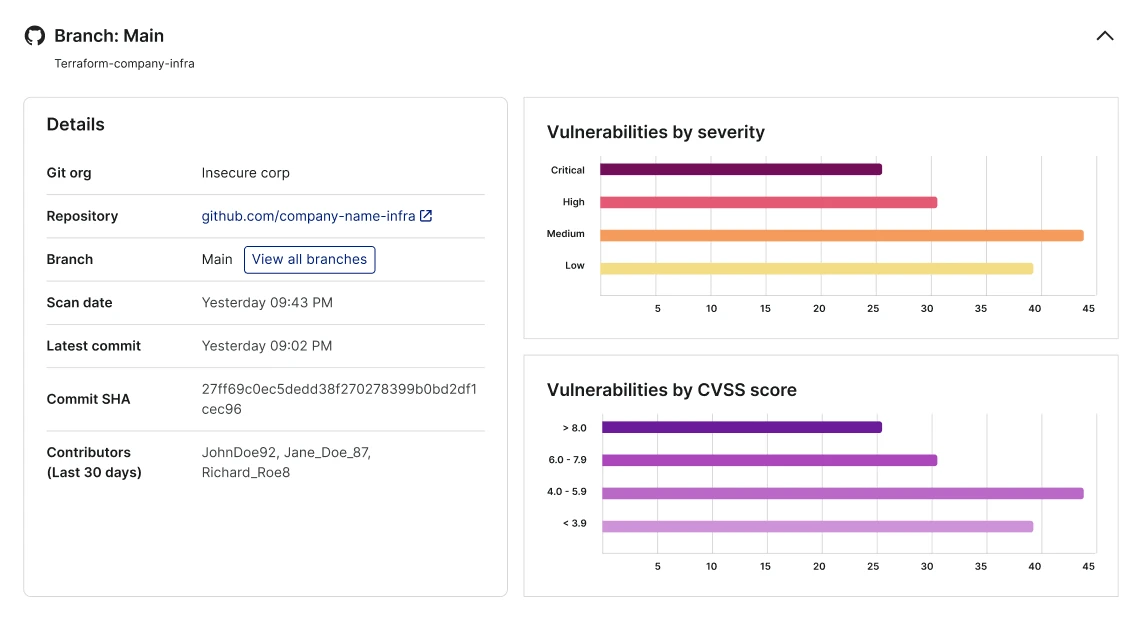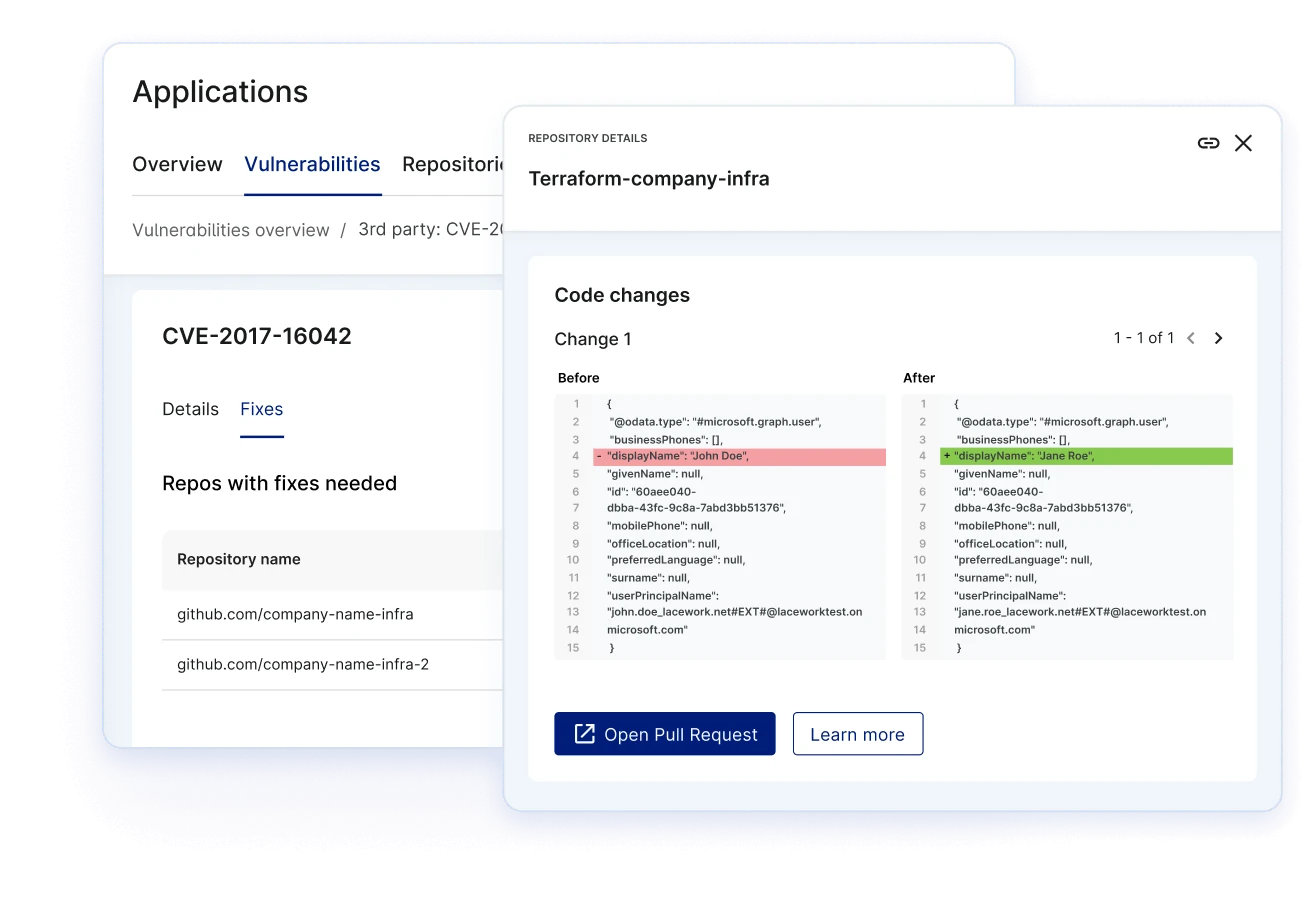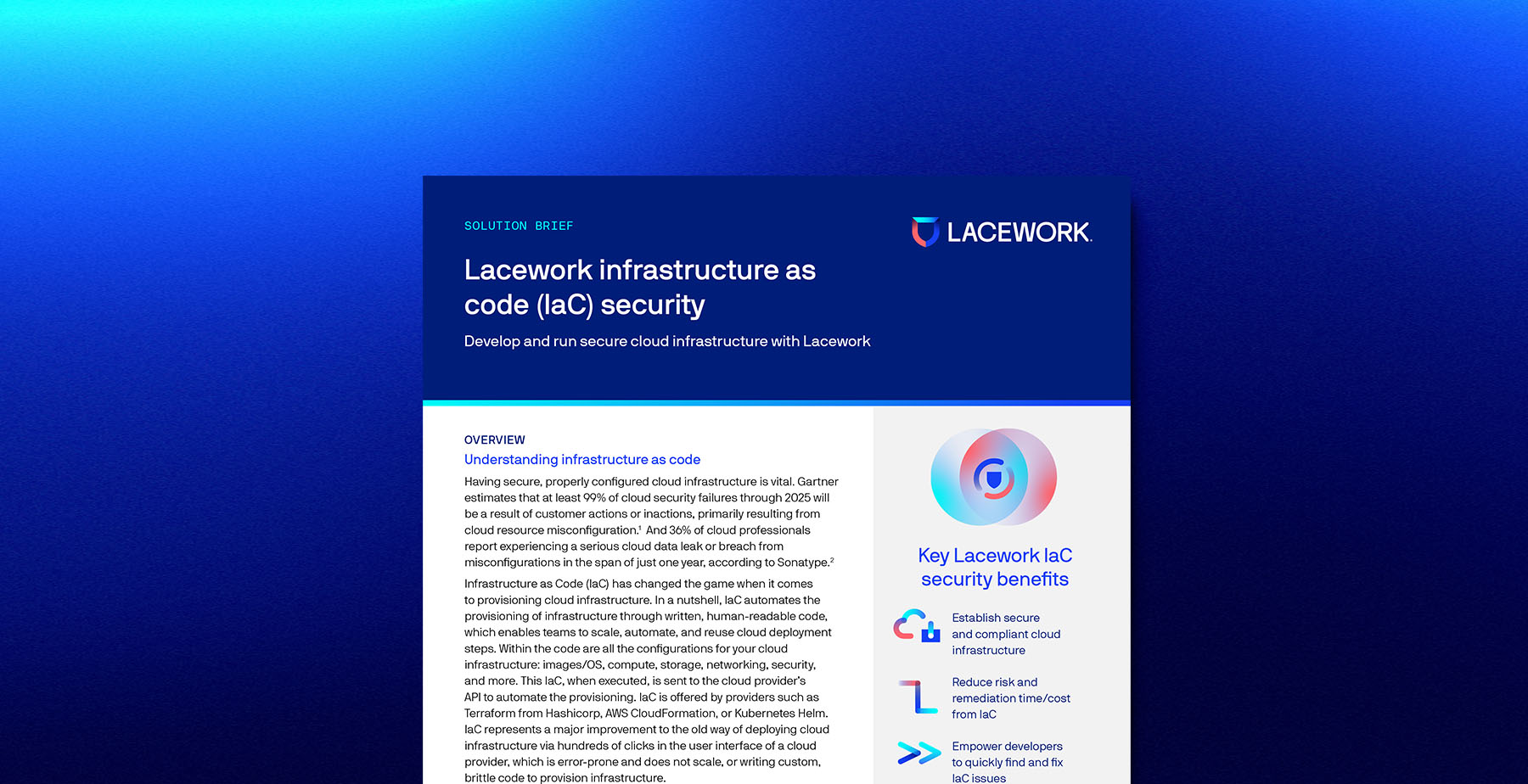Third-party and open-source code risk management
Understand and manage your declared and indirect third-party code packages and fix your most critical vulnerabilities.
Third-party software is not risk-free
Public and commercially-available code can save time and effort. But it can also leave your applications exposed.
Visibility is no easy task
Organizations don’t have visibility into indirect open-source or third-party dependencies and their associated vulnerabilities.
Teams are overwhelmed
Organizations don’t have visibility into indirect open-source or third-party dependencies and their associated vulnerabilities.
There’s risk in the fine print
Companies face financial risk without an easy way to identify overly restrictive open-source license requirements.
BENEFITS
Third-party code without the risk
Leverage third-party code without worrying about security or compliance issues.
List all your software components
Gain continuous visibility of third-party and open-source dependencies within your application.
Know where to focus first
Understand which third-party code vulnerabilities are most critical to fix, based on how a vulnerable package is used within your application.
Shift left, not shove left
Secure code quickly and easily without slowing developers or requiring them to become security experts.

OUR APPROACH
Know more, develop faster
Equip developers with more code security risk context without disrupting workflows.
Prioritize and fix your biggest risks
- Identify any vulnerabilities tied to your code dependencies
- Find and prioritize your most prevalent third-party and open-source vulnerabilities with application context filtering (ACF)
- Accelerate remediation with auto-generated pull requests for updating each vulnerable package
- Know which developer owns fixing each vulnerability, its status, and who needs additional support

Continuously manage your software supply chain
- Gain a continuous software bill of materials (SBOM) of all declared and indirect third-party and open-source code packages
- Intuitively manage SBOM data and share sensitive application information securely with customers and partners
- Comply with increasing guidance and regulations such as US Executive Order 14028
- Quickly identify overly restrictive open-source licenses that create IP and financial risk

Gain continuous coverage from code to run
- Automatically detect vulnerabilities within IDEs as developers write code
- Continuously monitor code repositories for third-party dependencies and their vulnerabilities
- Check container images in build time with a plug-and-play inline scanner that integrates with a CI or with other developer tools
- Continuously scan applications in runtime for vulnerable packages and language libraries and for anomalous activity

“I’ve been in the industry for many years. When we sat down with our infrastructure and DevOps teams to review Lacework, that was the only time I’ve ever seen all the teams agree on a solution.”
John Turner
Senior Security Architect

“We turned Lacework on and immediately started seeing things in our environment that we wanted to know about. Our DevOps engineers saw it in action and fell in love. They couldn’t believe it was so simple.”
David Ramsay
Head of Engineering, COO
Read case study
“We can react to any new major vulnerability through automatic notifications for the DevOps team. The security team is here to support them, but Lacework gives them more autonomy now to perform any actions that they want on the cloud.”
Aurélien Donneger
Head of Security
Read case studyCommon questions
Software composition analysis (SCA) is a pivotal tool in modern development, aiding teams in managing open source software (OSS) usage. Engaging in effective SCA ensures precise tracking and managing of OSS components, guaranteeing security, license compliance, and quality within the development cycle. By pinpointing vulnerabilities and mitigating risks, software composition analysis furnishes developers with a robust framework, protecting applications from potential security breaches and ensuring regulatory adherence.
Unlock the potential of your software development with a software bill of materials (SBOM). Essential in modern cybersecurity, an SBOM provides a comprehensive inventory of all components in software, ensuring transparency, traceability, and security. Leveraging SBOMs aids in mitigating vulnerabilities, ensures compliance, and helps manage open source components effectively. Explore how a software bill of materials can elevate your security and developmental efficacy, safeguarding your applications against potential threats.
Open-source code packages, while beneficial for development, bear inherent risks due to their public nature. Although they foster innovation and collaboration, open-source software can be susceptible to vulnerabilities, potentially exposing projects to security breaches. Ensuring vigilant management and security practices are crucial to mitigate risks and harness the power of open-source safely and effectively. Navigating through open-source challenges requires a strategic approach to safeguard your software.
Resources & Insights
Featured Insights




